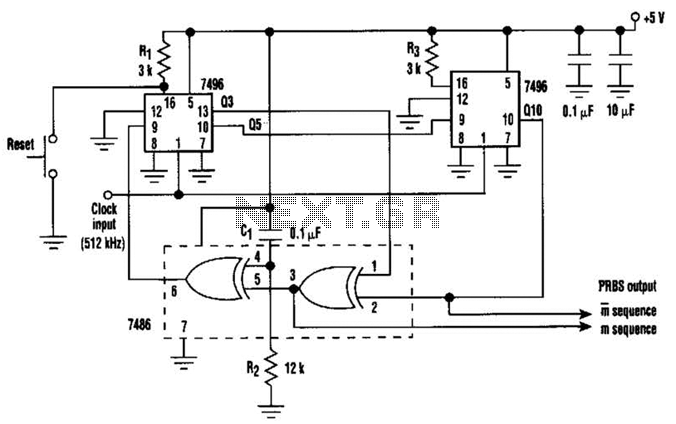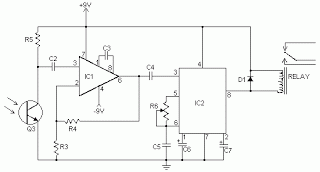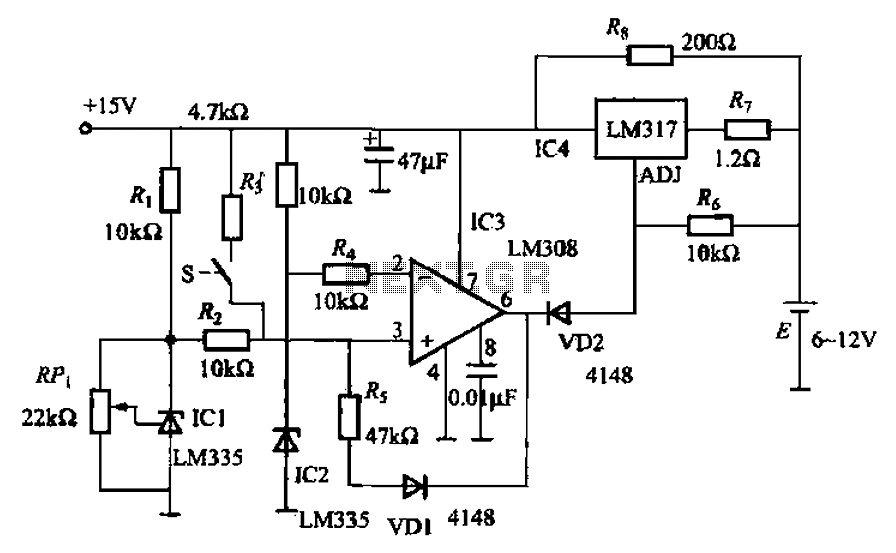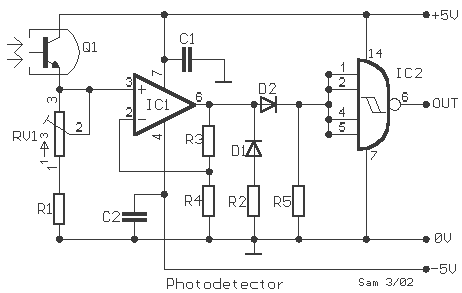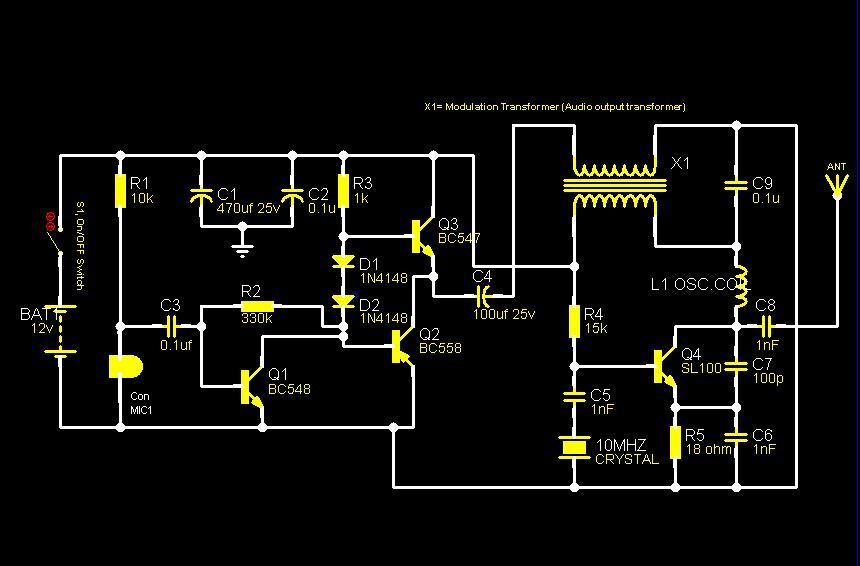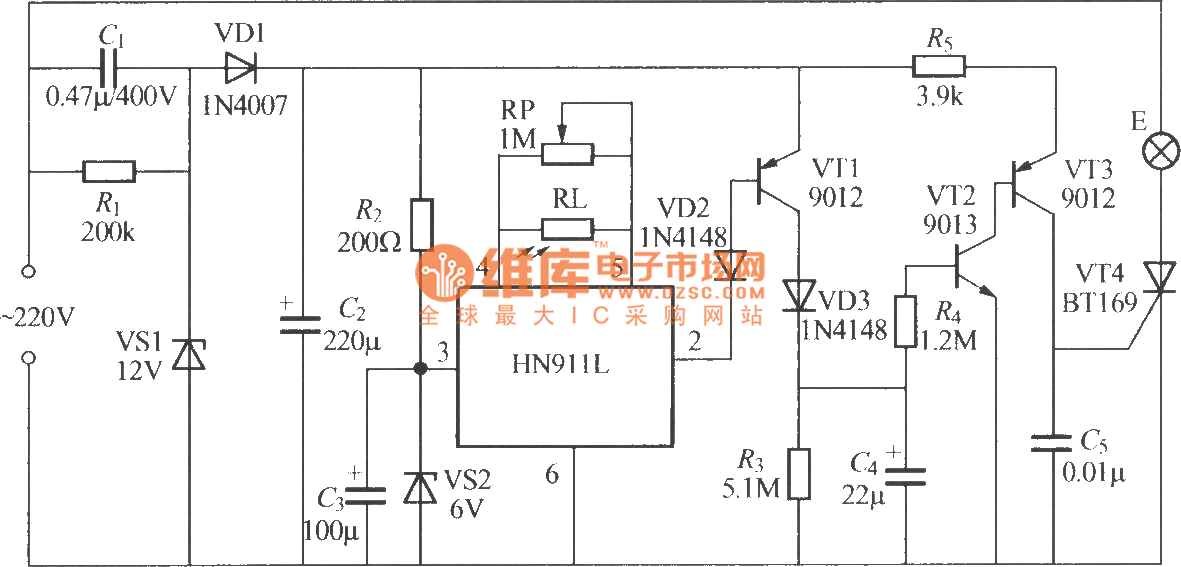
Radio Collar Transmitter Circuit
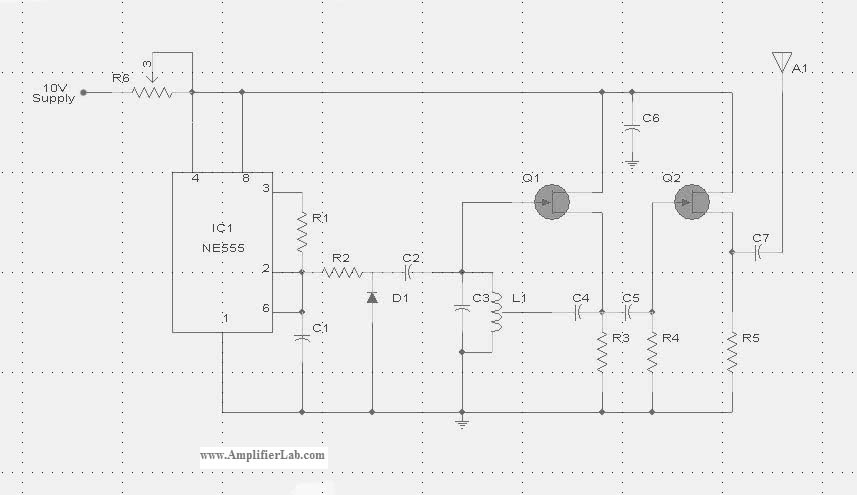
The circuit diagram of the Radio Collar Transmitter is presented here. This circuit is based on the NE555 integrated circuit, which serves as the central component.
The Radio Collar Transmitter circuit utilizes the NE555 timer IC to generate a modulated signal suitable for transmission. The NE555 can be configured in astable mode to produce a continuous square wave output, which is essential for creating the radio frequency signal. This signal can then be amplified and transmitted via an antenna.
In the typical configuration, the NE555 is connected with resistors and capacitors that determine the frequency and duty cycle of the output waveform. The frequency is set by the values of the resistors (R1 and R2) and the capacitor (C1) connected to the timing pins of the NE555. The duty cycle can be adjusted by varying R1 and R2, allowing for flexibility in the modulation of the output signal.
The output from the NE555 is then fed into a radio frequency amplifier circuit, which may consist of a transistor or a dedicated RF amplifier IC. This stage boosts the signal strength to ensure that it can be effectively transmitted over a distance. The amplified signal is then connected to an antenna, which converts the electrical signals into radio waves.
Power supply considerations are also critical in the design of the Radio Collar Transmitter. Typically, a battery or a small power source is used to provide the necessary voltage and current for the circuit. Proper decoupling capacitors should be included to filter out noise and ensure stable operation of the NE555 timer.
Overall, the Radio Collar Transmitter circuit is a practical application of the NE555 timer IC, showcasing its versatility in generating modulated signals for wireless communication purposes. Proper layout and component selection are essential for optimizing the performance and range of the transmitter.The circuit diagram of Radio Collar Transmitter has been described here. This circuit is based on the IC NE 555 which is the central part. 🔗 External reference
The Radio Collar Transmitter circuit utilizes the NE555 timer IC to generate a modulated signal suitable for transmission. The NE555 can be configured in astable mode to produce a continuous square wave output, which is essential for creating the radio frequency signal. This signal can then be amplified and transmitted via an antenna.
In the typical configuration, the NE555 is connected with resistors and capacitors that determine the frequency and duty cycle of the output waveform. The frequency is set by the values of the resistors (R1 and R2) and the capacitor (C1) connected to the timing pins of the NE555. The duty cycle can be adjusted by varying R1 and R2, allowing for flexibility in the modulation of the output signal.
The output from the NE555 is then fed into a radio frequency amplifier circuit, which may consist of a transistor or a dedicated RF amplifier IC. This stage boosts the signal strength to ensure that it can be effectively transmitted over a distance. The amplified signal is then connected to an antenna, which converts the electrical signals into radio waves.
Power supply considerations are also critical in the design of the Radio Collar Transmitter. Typically, a battery or a small power source is used to provide the necessary voltage and current for the circuit. Proper decoupling capacitors should be included to filter out noise and ensure stable operation of the NE555 timer.
Overall, the Radio Collar Transmitter circuit is a practical application of the NE555 timer IC, showcasing its versatility in generating modulated signals for wireless communication purposes. Proper layout and component selection are essential for optimizing the performance and range of the transmitter.The circuit diagram of Radio Collar Transmitter has been described here. This circuit is based on the IC NE 555 which is the central part. 🔗 External reference
Warning: include(partials/cookie-banner.php): Failed to open stream: Permission denied in /var/www/html/nextgr/view-circuit.php on line 713
Warning: include(): Failed opening 'partials/cookie-banner.php' for inclusion (include_path='.:/usr/share/php') in /var/www/html/nextgr/view-circuit.php on line 713
